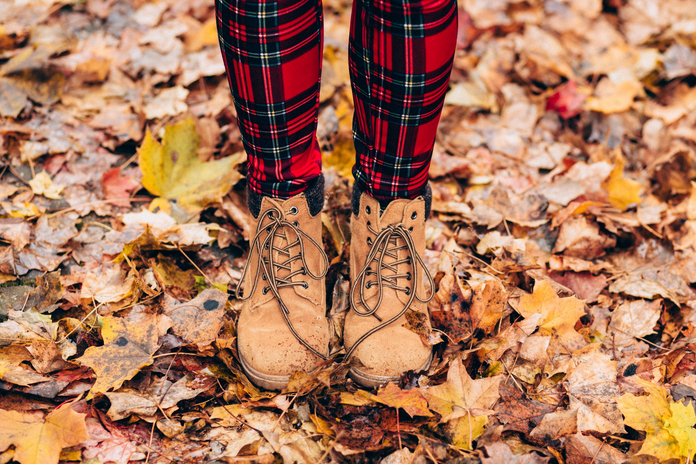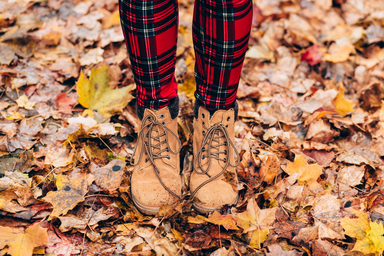It’s getting chilly outside and you want something hot to drink to warm you up, but what do you do when you’re bored with hot chocolate and you don’t want the full caffeine kick of coffee or you just don’t like the taste of coffee? Let me introduce you to the world of hot tea. If I say so myself, it’s quite a partea. (Okay, okay, that’s my one and only tea pun, I swear.) No, hot tea is not just for grandmas, the British, or for when you have a cold (even though it can really help you get over the sniffles). If you have a negative stereotype about tea, I challenge you to try out a few kinds and see if there’s one you’ll love. Here’s the basics of what you need to know to get the perfect cup of tea each time.
Types of Tea
A few of the most common types of tea are herbal tea, white tea, green tea, and black tea. These are pretty much the basics and are great for people trying to get into tea and explore different flavor profiles. Herbal tea is not technically a real tea because it doesn’t have any tea leaves and therefore is naturally decaffeinated. Instead, it’s a mixture of different herbs, roots, spices, flowers, or fruit. Herbal teas typically are light and aromatic, even floral, and there’s a huge variety of flavors. White tea is a very delicate, light tea, and the leaves are harvested young and are generally unprocessed. It’s called white tea because there are very fine, white hairs on the unopened buds of the tea plant when it’s harvested. The flavor of white tea is typically fresh and not bitter, and it has low levels of caffeine, which makes it a good step up from herbal tea if you want a little bit of a jump to your day.
Green tea is unique in that it is not oxidized, which is why its leaves remain more green than other types of tea. It has a fresh flavor and leans away from being as floral as white or herbal tea. It’s really good with honey for a bit of sweetness, and it barely has more caffeine than white tea. My personal favorite type of tea is black tea, which is the most caffeinated out of all the tea varieties, and it has the strongest flavor. Its flavor comes from it being oxidized for the longest out of all of the types of tea, and it’s the type of tea used to make sweet and unsweet tea. Black tea is probably the most popular Western tea, and a few of its most popular types include Earl Grey (my personal favorite), English breakfast, and chai (which is made of a base of black tea mixed with spices).
Brewing Your Tea
However, making tea isn’t as easy as tossing a tea bag into a mug of hot water and drinking up. One of my biggest pet peeves is when I see people walking around with their tea bag still in the cup. No. To get the best flavor out of your tea, there are certain steep times to follow. Oversteeping tea doesn’t bring out more of the flavor like you would expect. Instead, it makes the tea bitter because the tea leaves begin releasing tannins, which mask the taste of the tea. Since white tea is so delicate, it should only be steeped for one to three minutes. Green tea shouldn’t be steeped for more than three minutes, and black tea should typically be steeped for at least three minutes and no more than five. As for herbal tea, since there’s no actual tea leaves that can be oversteeped, you can steep it for as long as you want. The temperature of the water is also a factor. Since white tea and green tea is so delicate, the water should be hot but not boiling. For black tea and herbal tea, the water should be brought to a boil before it’s poured over the tea bag. Of course, it’s hard to get the perfect water temperature if you don’t have a tea kettle, so warming your water in a microwave or in a Keurig will do in a pinch. Keurig also makes tea K-cups, but I’ve found that those just don’t turn out as well as doing it yourself.
It’s also important to note that there’s different ways to brew tea, and if you want to get fancy, you could look into some loose leaf tea. Loose leaf tea isn’t ground as finely as tea that comes ready to brew in tea sachets/tea bags (little bags that act as filters that typically have strings for pulling the bag out of the water), and loose leaf tea is typically sold in tins or boxes. That means that to brew loose leaf tea, you need to get some empty tea sachets or a reusable tea infuser. I have a tea infuser that’s made out of silicon, is super easy to use and wash, and it looks like a manatee and hangs off of the side of the mug! There’s also tea infusers on chains that you dangle into the cup and then pull out when the steeping is done like you would a tea sachet. If you’re using a tea bag or tea sachet, there’s a cool gadget called the Primula tea bag buddy. It’s a silicon cover for your mug that holds the tea bag in place while it’s steeping, and then you can use it to hold the hot tea bag and squeeze out every last drop of goodness. I’m not lying when I say it’s revolutionized how I make tea.
All the Fixin’s
If you want to sweeten your tea, you can add regular sugar or a sugar substitute, honey, agave nectar, or a simple syrup. You can also spruce up your black tea with milk or lemon. Personally, I add sugar and a splash of milk into my Earl Grey, some vanilla creamer and sugar into vanilla chai, and just a bit of sugar or honey in herbal and green tea. The fun part of tea is playing around with it until you figure out how to make the perfect cup. Here’s a few of my favorite teas that haven’t failed me yet: Bigelow Earl Grey, Bigelow vanilla chai, Tazo zen green tea, and Celestial chamomile, peppermint, and lemon zinger tea. If you become a tea addict like me, you might even find yourself hoarding a copious amount of mugs and buying candles and perfume that smell like tea. (Hello, Commodity’s Bergamot perfume.) I bet there’s at least one perfect blend of tea out there waiting for you, so on the next chilly day, grab a blanket, a book, and curl up with a good cup of tea!
Make sure to like HC Belmont on Facebook, follow us on Twitter, pin with us on Pinterest, and love us on Instagram.

